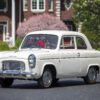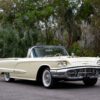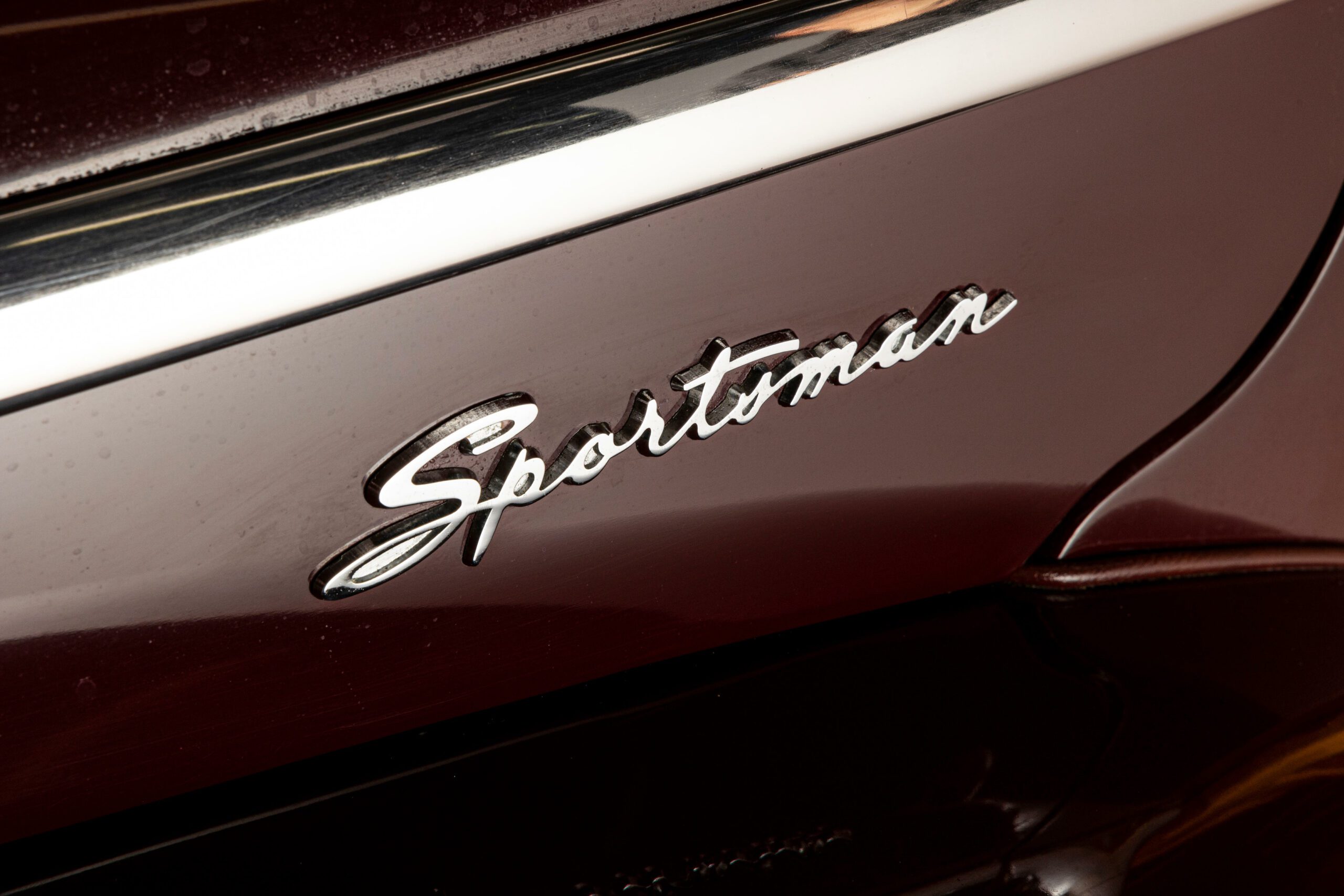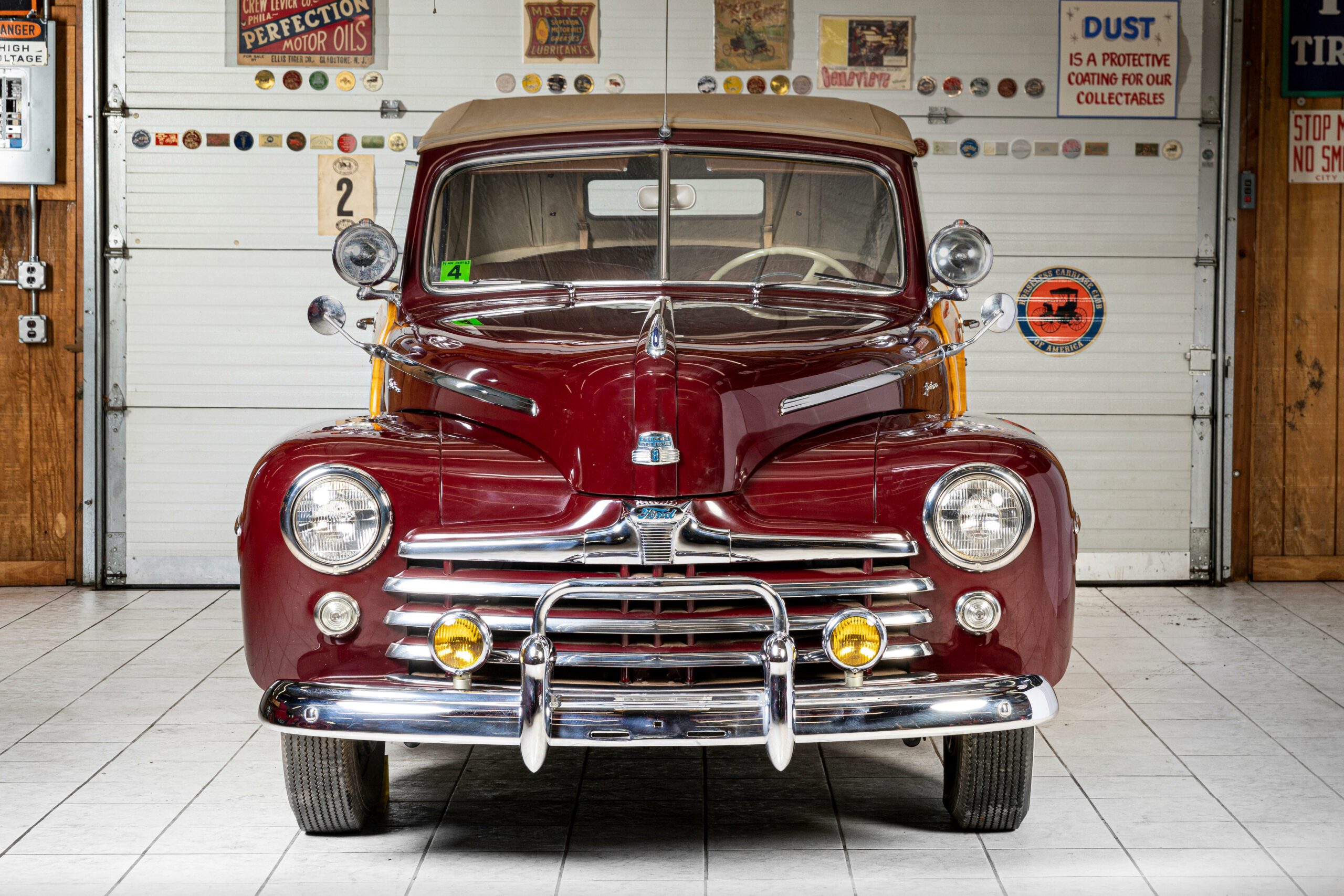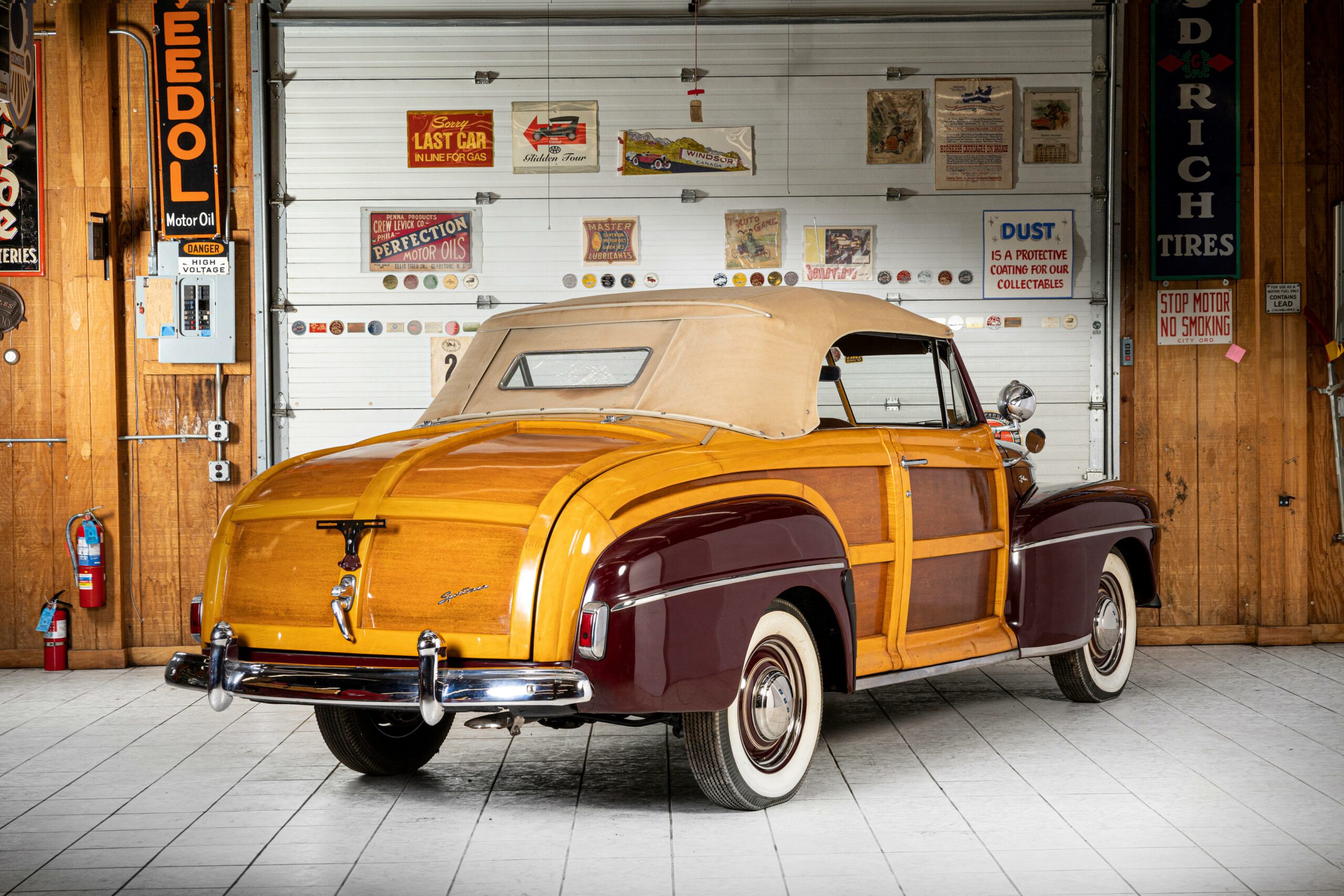Following the conclusion of World War II, a surge in demand for new cars emerged among the civilian population. The Ford Motor Company, which had dedicated the previous four years to military orders like other manufacturers, expedited postwar production by giving their 1942 models a facelift. Notably, in 1946, Ford introduced a new model, the Sportsman Convertible, designated as the model 71.
Ford had been crafting station wagons at their Iron Mountain plant in Michigan’s Upper Peninsula since the early 1930s, thanks to extensive hardwood resources and advanced woodworking facilities. In 1945, Henry Ford II commissioned a wooden-bodied convertible for personal use, recognizing a potential market following the prewar success of Chrysler’s wooden station wagons. The decision to produce the “Sportsman” was made, and the first car was displayed in Dearborn. On Christmas day, 1945, it found its way to actress Ella Raines in Hollywood while she was filming White Tie and Tails.
The 1946 Sportsman was priced $200 higher than a standard convertible, which sold for $1,436. Production commenced earnestly in July 1946 and continued until November 1947, resulting in a total production of 3,525 units—723 in 1946, 2,774 in 1947, and 28 for the 1948 model year. This rarity ranks it among the scarcest Ford models.
The Sportsman featured the same “motor-lift” convertible top as the club convertible and included hydraulic push-button windows borrowed from Lincoln. The wooden bodies were intricately detailed and showcased remarkable craftsmanship, with the rear deck lid standing out as a masterpiece of compound curved, dovetailed, and finger-jointed construction.
Source: Bonhams Cars


